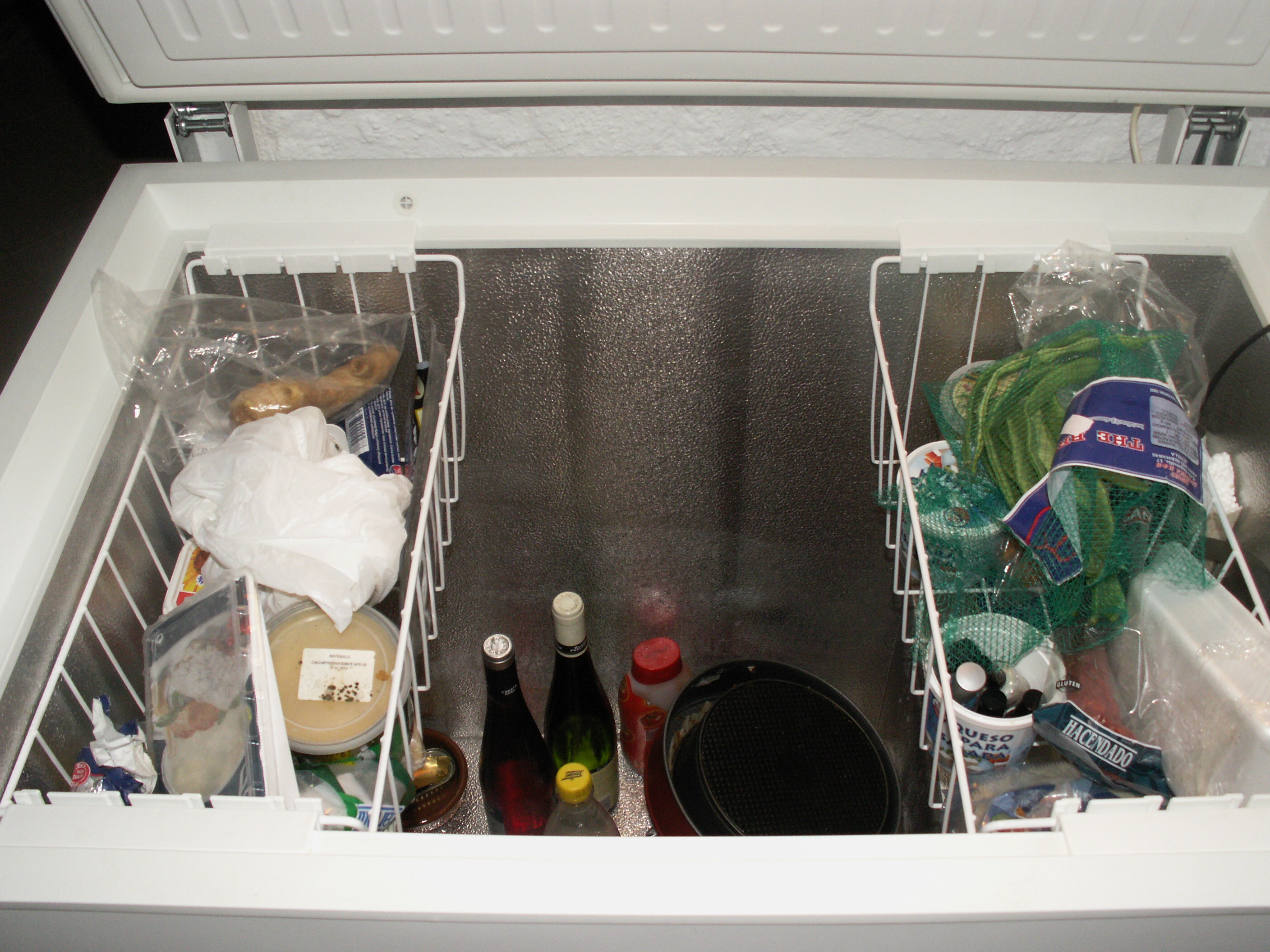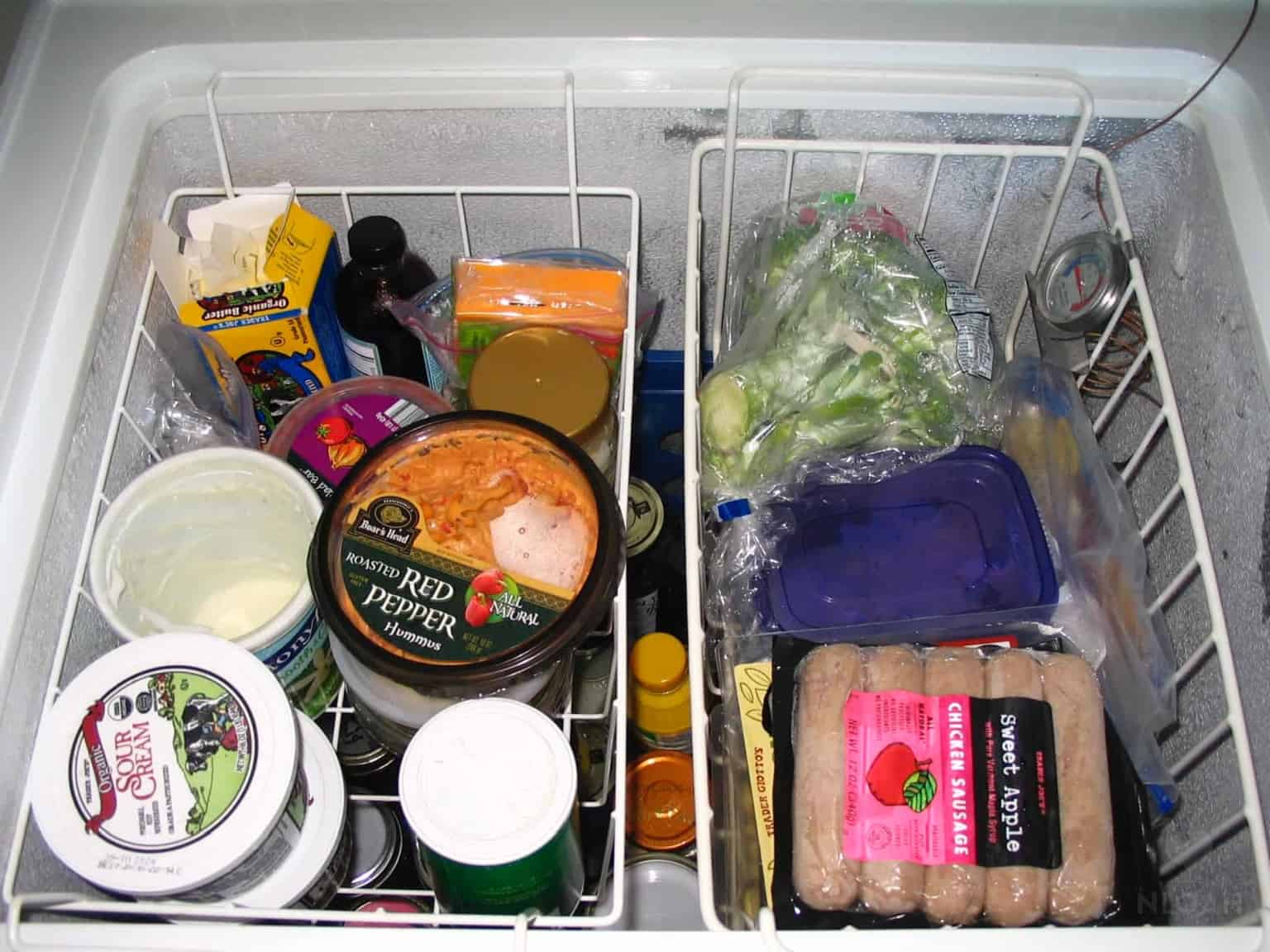Yes, you can use a chest freezer as a fridge. Simply adjust the thermostat to a higher temperature.
Using a chest freezer as a refrigerator can be a practical solution for those needing extra cold storage. It’s often more energy-efficient and spacious than traditional fridges. Many people opt for this method to save money or when a standard fridge is unavailable.
While a chest freezer primarily freezes items, it can accommodate various foods and beverages when set to the right temperature. A few simple modifications, like adding a thermostat or using a fan, can enhance its functionality. This guide explores the benefits and considerations of converting a chest freezer into a refrigerator, helping you make an informed decision for your storage needs.

Credit: aselfsufficientlife.com
The Basics Of Chest Freezers And Fridges
Chest freezers and fridges serve different purposes. A chest freezer keeps food frozen. It operates at a much lower temperature than a fridge. The temperature range for a chest freezer is typically -10°F to 0°F. In contrast, fridges usually maintain a range of 32°F to 40°F. This difference affects food preservation.
Using a chest freezer as a fridge can be tricky. It will keep items too cold for fresh foods. Vegetables and dairy may freeze if placed inside. The lack of temperature control is a concern.
| Type | Temperature Range |
|---|---|
| Chest Freezer | -10°F to 0°F |
| Fridge | 32°F to 40°F |
Why Consider Using A Chest Freezer As A Fridge?
Using a chest freezer as a fridge can be very energy efficient. Chest freezers use less power than traditional refrigerators. This can lead to lower electricity bills over time.
Space and storage are also important factors. A chest freezer offers more storage space than a regular fridge. This allows you to store larger items easily. You can organize food by using baskets or bins inside.
Maintaining a chest freezer is simple and convenient. It’s easy to clean and requires less frequent defrosting. Overall, a chest freezer can serve as a smart alternative to a fridge.
Technical Modifications Needed
To use a chest freezer as a fridge, temperature control is essential. Most freezers operate at very low temperatures. A thermostat will help manage this. Adjusting the thermostat to a higher setting is crucial. Aim for a temperature between 32°F and 40°F.
Ventilation is also important for proper function. Ensure the freezer has enough airflow around it. Blocked vents can cause overheating. Using a fan can help improve air circulation. This will keep the temperature stable.
Pros And Cons
Using a chest freezer as a fridge can save energy. A chest freezer uses less electricity than a regular fridge. This means lower utility bills every month.
Initial setup can be tricky. Finding the right temperature takes time. A freezer runs colder than a fridge. Adjusting the settings is important for safety.
Food storage can be a challenge. Items may freeze if not monitored closely. Regular checks are needed to avoid spoilage. Keep a thermometer inside to track the temperature.
Real-life Examples
Many people have successfully used a chest freezer as a fridge. One user shared that keeping the temperature above 32°F works well. They stored drinks and snacks without spoiling them.
Another case involved a family who used it for meat storage. They adjusted the settings and enjoyed fresh meat for months. Users often find this method cost-effective.
| User | Experience |
|---|---|
| Sarah | Used it for drinks; very satisfied! |
| John | Stored meat; saved money on groceries. |
| Emily | Fruits and veggies stayed fresh longer. |
User testimonials show great results. Many recommend trying this method. It can help save space and money.

Credit: www.newlifeonahomestead.com
How To Choose The Right Chest Freezer
Choosing the right chest freezer is important. Size matters a lot. Measure the space where you will place it. A larger freezer offers more storage. But, it takes up more room. Make sure it fits well in your kitchen or garage.
Consider your family needs. A small family might need a smaller model. A larger family often requires a bigger chest freezer. Check the capacity before buying.
| Brand | Model | Size (Cubic Feet) |
|---|---|---|
| Brand A | Model 1 | 5 |
| Brand B | Model 2 | 7 |
| Brand C | Model 3 | 10 |
Installation And Setup Guide
Using a chest freezer as a fridge is possible with the right steps. Follow these step-by-step instructions for installation:
- Choose a suitable location away from direct sunlight.
- Set the temperature control to a higher setting, around 32°F to 40°F.
- Place a thermometer inside to monitor the temperature.
- Keep the lid closed as much as possible to maintain the cool air.
For maintenance, consider these tips:
- Regularly check the temperature to ensure it stays consistent.
- Clean the interior with a mild detergent and warm water.
- Inspect the seals for any cracks or damage.
- Defrost regularly if ice builds up inside.

Credit: johnlvs2run.wordpress.com
Faqs And Troubleshooting
Using a chest freezer as a fridge can lead to some common issues. Temperature control is crucial. Most chest freezers run too cold for fresh food. This can cause items to freeze. Adjusting the thermostat may help, but it’s not always reliable.
Another issue is humidity. Chest freezers are not designed for high humidity. This can lead to frost buildup. Regularly checking for frost is important. If frost accumulates, it can affect performance.
Power outages can also cause problems. A freezer may not keep items cold long enough. Be cautious during long outages. Food may spoil quickly without power.
For expert advice, consider using a thermometer. This helps ensure the right temperature. Regular maintenance can also help avoid issues.
Conclusion
Using a chest freezer as a fridge is possible but requires careful adjustments. Monitor the temperature closely to ensure food safety. While it can save space and energy, understand the limitations. Ultimately, weigh the pros and cons before making this switch for your home needs.
A thoughtful approach is key.
